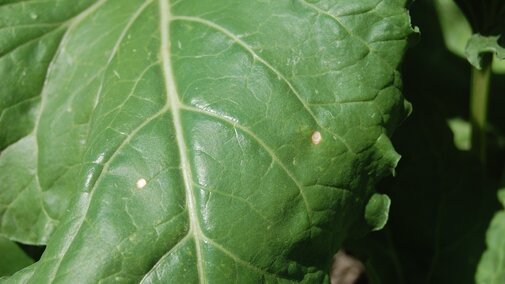On July 13, symptoms characteristic of Cercospora leaf spot (CLS) were found on lower leaves of sugarbeets from research plots at the Panhandle Research and Extension Center at Scottsbluff.
This finding indicates that the infection likely occurred back in early July, which historically has been early for us in western Nebraska. It also implies that many of the new leaves may already be infected but not exhibiting symptoms yet. Infection of the newer leaves is where the economic loss occurs with both root yields and sugar content. Curiously, this is almost the exact date when CLS was first observed in our plots in 2019.
CLS, a foliar disease of the beet, has long been a problem for sugarbeet production in more humid areas of the United States. It has been a sporadic, but potentially severe problem for us in western Nebraska. The disease is caused by the fungal pathogen, Cercospora beticola, and is spread by spores moving in wind currents throughout and among fields.
The pathogen overwinters in infected residues and can serve as a source of inoculum the following season. Disease development is strongly dependent upon several very specific environmental conditions. These include:
- periods of high humidity or extended leaf wetness (more than 11 hours) and
- warm temperatures (higher than 60-65 degrees Fahrenheit at night and 80-90 degrees during the day).
Without these exact conditions, disease initiation, spread and resulting damage to beet crops is greatly reduced.
The fungal spores germinate, infect, and grow within leaf tissues. Under optimal conditions, new lesions and spores will be formed within 10-14 days. This means that whenever you see the circular, ash-colored lesions (1/8 inch in diameter) surrounded by a dark border, infection has actually occurred approximately two weeks earlier.
Scouting Recommended
This brief report is to simply inform everyone about its presence in Scotts Bluff County. It is not time to panic, or worry about treating with any spraying of fungicides, but it is time to begin scouting fields closely looking for symptoms. There has also been work this year on a new tool coordinated with the Cercospora Alert System that has been used in the past. Results of this work will be shared when available.

